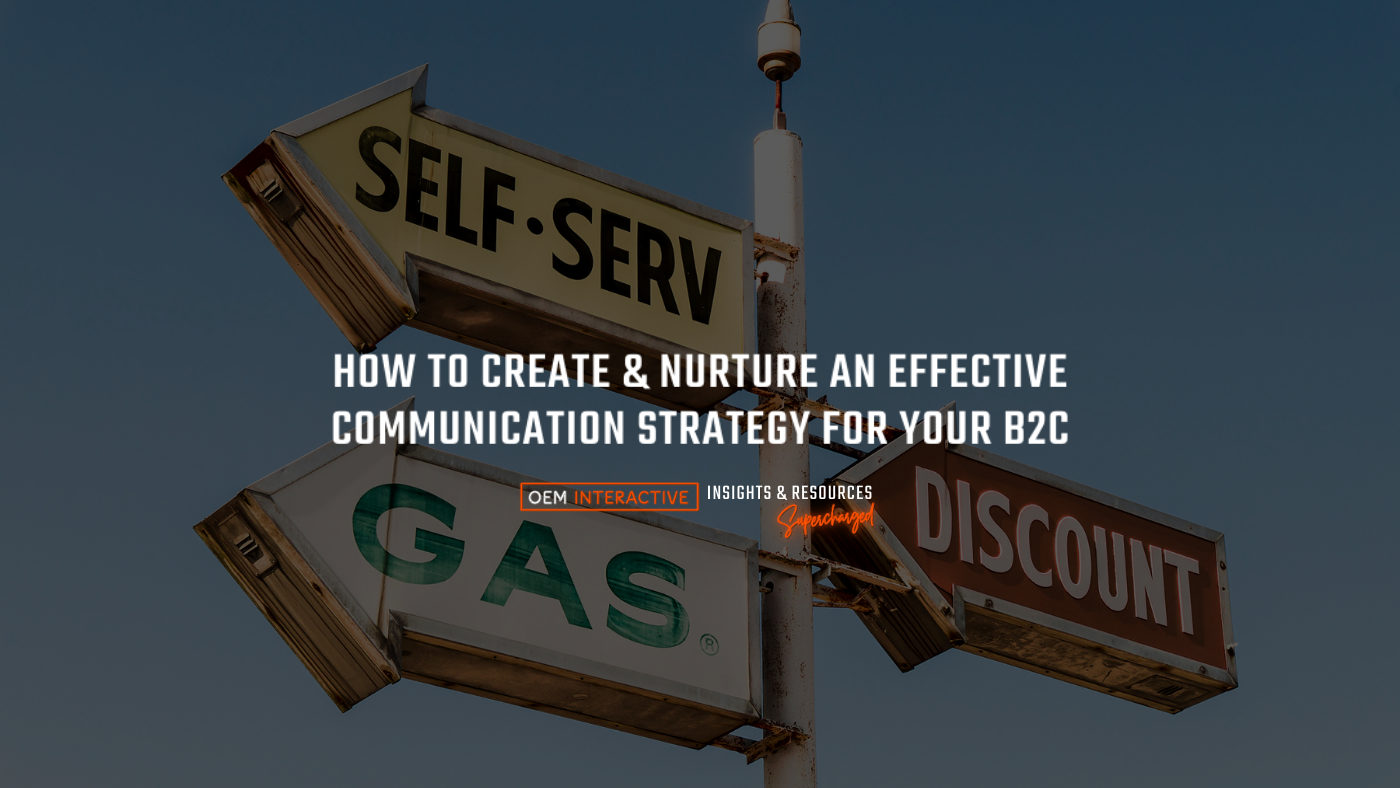Marketing automotive parts and accessories online is extremely competitive. With so much competition, it’s vital to eliminate unnecessary costs in order to keep profit margins as high as possible. One thing that eats into the profits of vendors selling auto parts online is cancelled orders and customer returns. In this episode, we discuss how to increase profitability by reducing cancelled orders and customer returns when selling automotive parts and accessories online.
In this Episode, We Discuss:
- Make Customers Provide a VIN!
- How Can You Reduce The Amount Of Returns? (1:20)
- Returns drain staff time, profit margins and service experience
- Make the customer provide a VIN to qualify for a return
- Parts staff needs to double-check every order!
- How Can You Reduce The Amount Of Returns? (1:20)
-
- What if they DON’T provide their VIN? (2:15)
- Return policy standards in place
- GET ON THE PHONE!!!
- How Important Is Customer Contact? (3:35)
- Contact info needs to be readily available
- Chat can be effective to help customers
- 22% of products are returned due to difference in “look”
- Take images of parts so customers know what they order
- Are The Returns YOUR Fault?! (5:30)
- Is your staff properly trained?
- Have procedures in place for reference
- Is your return policy clear and concise?
- What if they DON’T provide their VIN? (2:15)
VIDEO TRANSCRIPT
Ashley: Ashley Robertson here, back for another week of The Pit Stop with Aaron Waters. This week, we’re gonna be talking about reducing customer returns.
Aaron: Yeah. Ashley, good to see you again.
Ashley: Excellent to be here.
Aaron: Love having you on The Pit Stop. Ashley, I wanted to talk to you about returns and customer returns, and communicating what we can do, what can we effectively do to communicate to our partners how to reduce returns.
Ashley: Absolutely, important topic.
Aaron: We’re seeing it quite a bit with, not quite a bit. We have some customers here and there that, 50% or 40% or 30% of their orders, they’re getting returns. What can we do to help reduce the amount of returns that somebody is getting?
Ashley: Absolutely. Yeah, that’s a really important topic because customer returns can be a big drain on your staff’s time, on your overall profit margins. And every customer likes to get the right part the first time, and have that golden customer experience. Really the biggest thing that I would say would reduce customer returns, or the biggest piece of advice that I can give is make customers provide a VIN in order to qualify to return the part. This actually gives your internal parts staff the ability when an order comes through, they can see the year, make and model that’s selected. They see the VIN. And what they can do is they can double check that order. That’s taking that initiative to double check for the customer.
Aaron: Now, what if they don’t provide that VIN?
Ashley: If they don’t provide the VIN, you can have something written into your return policy where either maybe you don’t accept returns for parts that didn’t provide VIN or maybe you just increase the amount of restocking fee, don’t refund shipping. You know, these kinds of tactics.
Aaron: We’ve also talked about being actively engaged, right?
Ashley: Yeah, if you know a part is commonly mistakenly ordered, or there are issues with this specific part being returned in the past, take some initiative, reach out to the customer by phone or email, form a relationship, build trust, build that bond, and ask them the right questions so that you know you’re getting them the right part.
Aaron: Get on the phone.
Aaron: You didn’t get that VIN number, get on the phone, call them. Ask them for it. “Hey, I just want to make sure that we’re delivering the right product to you in a timely manner,” so that we can potentially cut back and cut down on those issues. I think that that’s a really great insight on what they can do that, providing the VIN number there. On that, how does customer contact come into play when it comes to returns? How’s that process and how’s-
Ashley: It’s tremendously important, I think.
Aaron: Yeah.
Ashley: You need to make sure that your contact information is readily available on the website. We’ve talked about this before. Not hiding your phone number. Possibly even having a chat feature that will allow someone to ask questions before they ever place the order. Something like 22% of products are most likely to be returned to you for appearing differently when they arrive. Taking some initiative and taking product images, rather than having a schemata. It’s very difficult to tell what a part looks like from a schemata. Of course, there are OEM parts primarily we’re dealing with, but that’s something to think about if your parts department is shipping it out anyway. Take a quick image, load it to the site. It’s very simple to do. It will reduce overall returns because the customer knows exactly what they’re looking at.
Aaron: Ashley, one of those things that you talked about was that communication with being readily accessible to the customer when they do want to return something or they’re thinking about returning something. Something that we’ve talked about in the past is throwing your business card in there, in the box, whenever you ship something out, so that they know who to call.
Aaron: They know who they need to speak with, and maybe assign a designated person that’s going to be handling just those return questions.
Aaron: Designate employee A as the return guy because they know how to handle all these things. Put their card in the package, in the box going out. Oi think that’s something that can’t be overlooked, as well.
Ashley: That brings up you’ve got to ask yourself the question, are the returns coming in at all your fault? Are you properly training your staff?
Ashley: Making sure that your staff understands how to go through the ordering process so that it’s best for the customer, so they get that right part the first time, and we don’t have to go through a return later on.
Aaron: Yeah. That’s a really good point with training. What are you doing to train your employees? Each day, try to make them 1% better.
Ashley: Absolutely.
Aaron: How can you train this person, or how can you educate this person to be 1% better every day, because the more time that you’re putting into them, the better that they get, the better that a department’s going to get, and ultimately the bigger the brand is going to get.
Ashley: Right.
Aaron: It’s something that’s often overlooked and they just expect-
Ashley: Having those procedures makes it easier to cross train, as well.
Aaron: Absolutely. What’s something … What should these parts managers be looking at from a policy standpoint, and what initiatives from a policy standpoint can help reduce returns?
Ashley: Great question, yeah. It’s really, really important to have a comprehensive and easy to understand return policy page. You don’t want to over-complicate it, but at the same time, you do want to cover all your bases and make sure that from a dealership standpoint you’re protected, and you’re not just accepting everything back and letting profit leave the dealership. Some of the things you can do. Make sure you include the VIN request process and procedure for the order. If you’re gonna say a customer needs to provide a VIN in order to qualify for a return or in order to qualify for a no-restocking fee return, you need to put that in your policy. Including restocking fees will also help prevent returns because nobody wants to order something and then send it back and end up paying a fee for nothing.
Also not refunding shipping. If you shipped it out and your dealership paid that fee to get it there, and it’s not something on your end. You did the VIN check and everything was done properly, but this part cost you $20 to ship there, now it’s gonna cost $20 to ship back. You’re out $40. If you’re not doing a restocking fee on top of that, that’s a hefty loss for a parts department to absorb.
Aaron: Plus the losses that they’re taking upon-
Ashley: Staff time.
Aaron: The staff time.
Aaron: The boxes. The tape. All these things, they may seem very-
Ashley: The marketing dollars that went behind putting that part-
Aaron: The marketing dollars.
Ashley: Online, yeah.
Aaron: How much did it cost for you to acquire that customer?
Aaron: Then that all goes out the door.
Aaron: It’s really, really important that your staff, your department has a very formalized structure and process on handling these returns.
Ashley: Definitely. Put that online and then when they’re on the phone with a customer, it’s not like they have to be the bad guy. They’re telling the customers and pointing them in reference to, “Hey if you read our return policy page, here’s where it’s stated.” They can clearly go to it. They can reference it. And everyone’s on the same page that way.
Aaron: Yep. Well Ashley, thank you.
Aaron: Let’s end for pop it in.
Ashley: Always a pleasure.
Aaron: Talking about reducing customer returns. Once again, I really am gonna … My final thought here on this is being actively engaged and not being an order taker. We’ve said this 1000 times and we’re gonna say it 1000 times more. Actively engaged. Not being an order taker. If somebody doesn’t have the VIN in the order, call them up and say, “Hey, what is it that you … I want to know exactly what you’re looking for here.”
Ashley: Take that extra step.
Aaron: Take that extra step. That two minute phone call, five minute phone call can save you hundreds, thousands of dollars a month, or tens of thousands of dollars a year in profitability.
Ashley: Absolutely. Yeah.
Aaron: Be actively engaged. Don’t just let it go and cross your fingers and be that order taker, and shipping it off the line there.
Ashley: Right.
Ashley: Thank you.
Aaron: Always a pleasure. See you next time on The Pit Stop Podcast.



